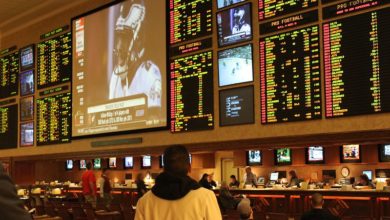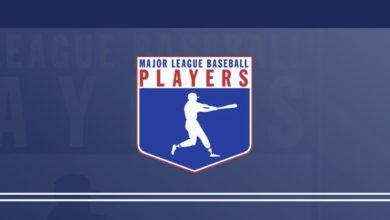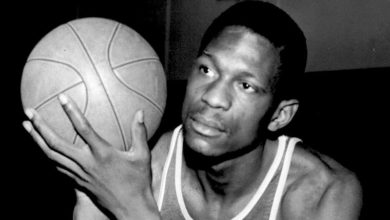Tua Tagovailoa (left) and Damar Hamlin. Liberation News collage.
Fans and football players alike were horrified on Jan. 2 when Damar Hamlin, a 24-year-old safety for the Buffalo Bills, went into cardiac arrest after making a routine tackle in a nationally televised game against the Cincinnati Bengals.
Live TV showing Hamlin in need of resuscitation has generated an outpouring of concern for him and other players over and above the game itself, and much solidarity. A Go Fund Me page Hamlin set up to to raise $2,500 for kids for Christmas received more than $5.5 million in contributions in the first 24 hours after his injury, and the money is still coming in.
Hamlin’s need to have his heart restarted on the field and the Christmas Day concussion suffered by Miami Dolphins quarterback Tua Tagovailoa have called national attention to the alarming injuries regularly inflicted upon football players in the sport that generates the most profits in the world.
Veterans sports writer Jenny Vrentas, writing for the New York Times, equates the high-speed collisions involved in tackles like the one Hamlin had just completed as “akin to that of a world-class sprinter running into a brick wall.”
Concussion protocol is failing the players
Additionally, despite the implementation of an official concussion protocol in recent years, professional football players are still experiencing head injuries at alarming rates, the injuries are not spotted when they occur, and players are pressured to return to the game before they have healed.
Tagovailoa’s Christmas Day concussion flew under the radar until the following day. It was his third concussion this season alone. Though the Dolphins failed to check for and recognize Tagovailoa’s concussion during the game, a joint National Football League and NFL Players Association investigation found that the current concussion protocol was not violated in Tagovailoa’s case. This, along with several other players being allowed to play with concussions, caused medical experts and football analysts alike to question the value of the National Football League’s concussion protocol in protecting the players.
After decades of NFL neglect of its players and coverups of the huge toll taken by head injuries on players, the fact that there is any concussion protocol at all is the result of struggle. Former players, activists and medical researchers have long demanded recognition of the devistating long-term effects of concussions and Chronic Traumatic Encephalopathy on players, and measures to prevent them.
CTE is a progressive degenerative brain disease caused by repeated blows to the head. It can only be diagnosed posthumously. A 2017 study at Boston University found that 99% of former NFL players suffer from CTE, as do up to 87% of players at lower levels – including high school and college football.
The drive for profit fuels a culture of violence
NFL ownership’s insatiable drive for immediate profits is at the expense of players’ health and even their lives. Despite this apparent danger, players are encouraged to play through injuries by a prevailing culture of toxic masculinity in the football industry that is propagated by ownership, coaches and sports announcers. More wins typically mean more ticket, merchandise and concessions sales, so players are expected to play through injuries rather than take the time to heal properly. This comes at great expense to the safety of players, Black and white, during their time on the field and long after they retire.
Justin Conrad Strzelczyk’s 2004 death, at age 36, helped spark a debate in the NFL about the link between playing football and CTE.
In 2012, NFL Hall of Fame player Junior Seau died by suicide at the age of 43. He shot himself in the chest, so his brain was intact and available to be studied by the National Institutes of Health, which concluded that he had CTE. This tragedy, along with a lawsuit filed by his family, brought much-needed public awareness to this issue. Two months before his suicide he said “the game needed to change.”
Grant Earl Feasel also died that year at age 52. His family donated his brain to the Concussion Legacy Foundation and he was among those diagnosed posthumously with CTE.
Frank Gifford died in 2015 from CTE. Gifford had a long football career and later became a popular announcer for “Monday Night Football.”
Former NFL cornerback Phillip Adams shot and killed six people and himself in April 2020. He, too, was diagnosed with Stage 2 CTE. Impulse control, depression and aggression are some of the symptoms of CTE.
As recent as December 2021, former star wide receiver Demaryius Thomas was found dead in his home at the age of 33 after complications from a seizure disorder. An autopsy found that he had Stage 2 CTE.
In fact, CTE has been diagnosed posthumously in more than 300 former players.
Given the extent of these cases, the lack of precaution surrounding Tagovailoa’s head injuries is alarming. He may not have exhibited obvious concussion symptoms during the game, but it is well known that it often takes a while for some symptoms to develop. Tagovailoa could have been evaluated by the unaffiliated neurotrauma consultants – especially since the play where he was concussed was similar to the plays where he was concussed during games against the Bills and Bengals within a five-day span earlier in the season. But he wasn’t evaluated, and played (poorly) the rest of the game, which the Dolphins lost anyway.
A failure by the concussion spotter
Even when players have obvious head injuries, as DeVante Parker did after he was hit during a play on Dec. 12, the NFL’s protocol failed them. Parker’s teammate, Nelson Agholor, spotted that Parker was dizzy and could hardly stand up. Agholor frantically tried to stop the game so Parker could receive medical attention, but Agholor’s efforts were ignored. Parker called out the NFL for how the league handled his concussion.
Self-reporting isn’t the solution
The NFL is still relying too heavily on players to self-report concussions, even though the players themselves, because of the concussion, may be slow to realize what has happened to them. This is despite the fact that there are over 30 medical professionals available to teams during games.
Dr. Allen Sills, the NFL’S chief medical officer, claims that around 40 percent of the league’s concussion evaluations involve self-reporting. This raises the question of how many concussions might be going unnoticed and untreated.
And even this self-reporting is traditionally discouraged by football’s toxic culture.
Los Angeles Rams quarterback Matthew Stafford self-reported symptoms in November and was placed in concussion protocol. Then, later in the month, he was placed on concussion protocol again after experiencing leg numbness that was not related to a lower-body injury. Clearly he had not healed before being returned to the field.
A systemic failure
The capitalist system always has and always will prioritize profits over personal and public safety. American football, which is a $28 billion global industry, is clearly no exception. The National Football League is the most profitable sports association in the world. Players, even those making millions of dollars per year, are treated as disposable by billionaire team owners.
How many more lives will be ruined by CTE and the neglectful policies and culture of the NFL? Professional team ownership and management who won’t provide adequate safety measures must be held accountable and liable for player safety. And it can’t just be done once players are dead and gone.





